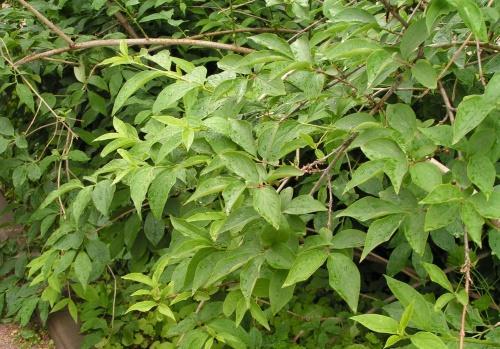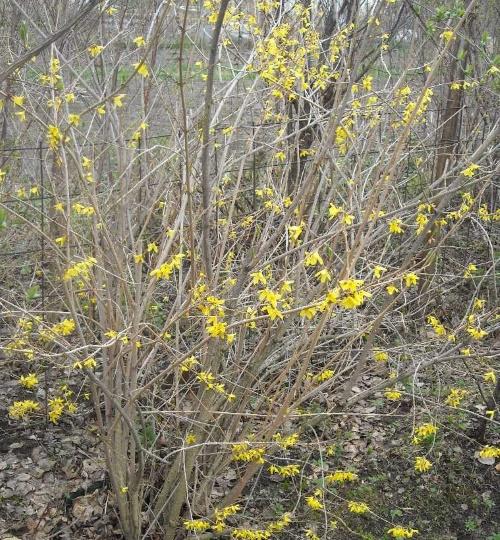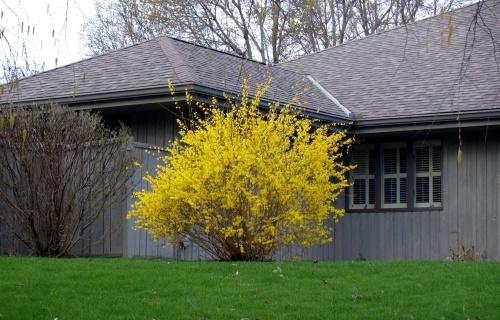Forsythia does not bloom - why does this happen and what to do about it
 Bright yellow inflorescences, abundantly covering the still bare shoots, are the main decoration of forsythia. However, sometimes, without giving buds, this chic shrub pleases only with decorative foliage. There may be several reasons why forsythia does not bloom, from an incorrectly selected planting site to mistakes in care.
Bright yellow inflorescences, abundantly covering the still bare shoots, are the main decoration of forsythia. However, sometimes, without giving buds, this chic shrub pleases only with decorative foliage. There may be several reasons why forsythia does not bloom, from an incorrectly selected planting site to mistakes in care.
In general, forsythia is not a particularly whimsical culture. This is one of the primrose shrubs, because it blooms in early spring, even before the leaves appear. The plant is no less beautiful in summer, covered with dark green foliage, and in autumn, when the deciduous cap changes color to purple. If forsythia is limited to this, and does not tie buds, it is worth analyzing why this is happening.
Forsythia does not bloom - why

- unsuitable landing site;
- excess or lack of watering;
- lack of nutrients;
- incorrect trimming;
- unsuccessful wintering.
Do not forget that the local climate also affects the development and flowering of the shrub. In the southern region with warm winters, forsythia can bloom as early as February. In the central strip and to the north, the buds appear closer to April.
Light soil and good lighting are the key to annual flowering

Forsythia is a light-loving plant and will not only grow slowly in the shade, but also bloom poorly. It should be planted in a well-lit and, most importantly, calm area. Pay special attention to nearby trees. If they are tall, over time, forsythia will be hidden from the sun by their shadow.
The shrub grows best on light calcareous soil. Heavy soil requires the addition of sand and humus.
Humidity problems - no flowers
 In a hot summer without watering, forsythia will not only not bloom, but it will not survive either. However, do not go to extremes and fill it daily. If the leaves began to fade and curl, and there were no buds, excess moisture is to blame. In this case, more serious problems may arise, for example, decay of the root system.
In a hot summer without watering, forsythia will not only not bloom, but it will not survive either. However, do not go to extremes and fill it daily. If the leaves began to fade and curl, and there were no buds, excess moisture is to blame. In this case, more serious problems may arise, for example, decay of the root system.
For a small bush, watering once a week is enough (1 bucket). In rainy weather, this will be superfluous.
Flowering has worsened - additional feeding will be needed
 Even the most fertile soil depletes over time, so fertilizing is important. Not only will this stimulate annual flowering, but it will also help build lush forms. The feeding scheme depends on the phase of culture development:
Even the most fertile soil depletes over time, so fertilizing is important. Not only will this stimulate annual flowering, but it will also help build lush forms. The feeding scheme depends on the phase of culture development:
- In the spring, organic matter can be added in the form of mulching with rotted manure.
- At the beginning of flowering, it is advisable to use a mineral complex.
- After the forsythia has faded, it is advisable to repeat it.
- The last dressing should be carried out in early autumn in the form of superphosphate. This will help the plant to winter safely.
When growing forsythia on acidic soil, you must lime priming.
Caution with pruning
 The shrub lays the main number of flower buds on last year's shoots.If you overdo it with pruning, you can remove them, respectively, and there will be nothing to bloom.
The shrub lays the main number of flower buds on last year's shoots.If you overdo it with pruning, you can remove them, respectively, and there will be nothing to bloom.
It is convenient to prune forsythia immediately after flowering, when you can see which branch has not bloomed. It will be correct to shorten those shoots that have faded, leaving 2/3 of their length. A thickened bush will give less buds, so you need to thin it out regularly.
How "winter problems" affect flowering
 In general, forsythia winters well, but in a harsh climate it needs shelter. Without it, the bush will not disappear, but the flower buds will freeze. Only those will remain and bloom that will be under the snow cover, which will protect them from frost. Therefore, in late autumn it is necessary to cover the forsythia. Low-growing varieties can be bent down and covered with lutrasil. In tall bushes, it is better to pull off the branches, tie them and wrap them with spunbond from above.
In general, forsythia winters well, but in a harsh climate it needs shelter. Without it, the bush will not disappear, but the flower buds will freeze. Only those will remain and bloom that will be under the snow cover, which will protect them from frost. Therefore, in late autumn it is necessary to cover the forsythia. Low-growing varieties can be bent down and covered with lutrasil. In tall bushes, it is better to pull off the branches, tie them and wrap them with spunbond from above.